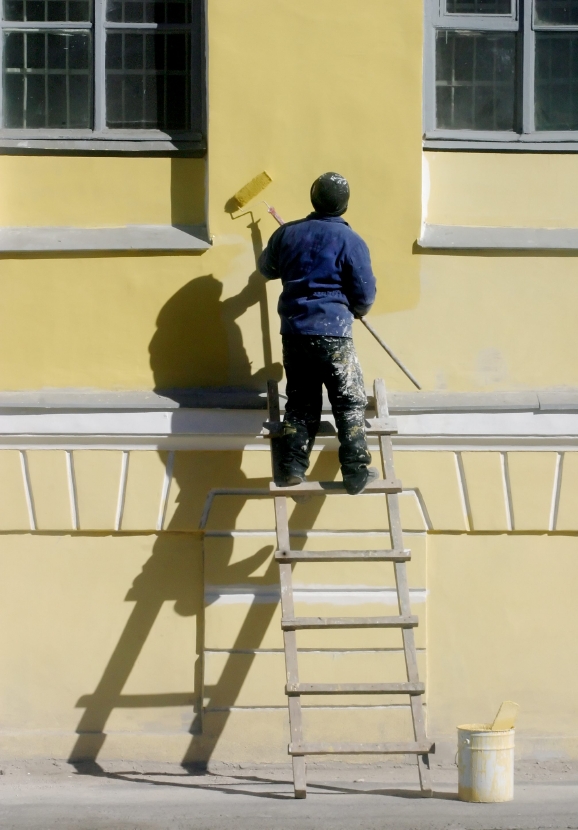Painters and Mesothelioma
Mesothelioma Not Something Painters Can Brush Away
You make your living as a painter in the construction industry.
You almost certainly came into contact with asbestos as a result.
Before the 1990s, asbestos was added to many different construction materials for these types of projects:
- Residential:
homes, apartments
- Commercial:
offices, shopping centers
- Industrial:
power plants, factories
- Institutional:
schools, hospitals
A huge inventory of pre-1990s properties remains standing today. That makes it possible you are encountering asbestos even now if you are still taking jobs and doing work in these types of buildings.
Earlier, the more direct asbestos threat to you as a painter came from exterior and interior oil-based paints produced before the late 1970s.
These often contained asbestos as a thickening agent or filler to improve lay-on performance, texture characteristics and curing speed.
The toxic mineral was also used in surface-preparation products such as spackling and joint compound.
Why Your Lungs Probably Contain Asbestos

Anything that disturbed the old paint could cause particles of asbestos to come loose, enter the air and enter your lungs when you breathed.
Simply applying a fresh coat over old paint could have provided enough of a disturbance to shed asbestos particles.
Much more asbestos would have gotten into the air from surface preparation work such as roughening, scraping, peeling or sanding.
Sometimes attempts to clean asbestos paint drippings that had dried onto drop cloths could put asbestos into the air. So could efforts to remove asbestos paint accumulations from buckets, pans, edge guards and brush ferrules with the aid of a pocket knife or chisel.
Asbestos in cured paint could also be disturbed by using a power screwdriver or electric drill to remove mounting screws from pigmented walls and ceilings. As these tools spin the screw heads counterclockwise at speed, bits of wallboard and asbestos paint are pulled out and thrown into the air.
What the Union Recommends
To reduce the health dangers of asbestos exposure, labor unions and trade groups serving ¬painters advise their working members to avoid applying abrasives to old paint or using power tools to prepare previously painted surfaces.
Also strongly recommended by these groups is use of a quality respirator. A disposable painter’s mask may not provide enough protection.
Asbestos can also enter your body if you put your fingers in your mouth after making hand contact with asbestos. For that reason, it is recommended you also wear latex gloves while on the job.
Labor groups warn painters to be alert for asbestos exposure from construction materials made prior to the 1990s and used by other trades. Products to be mindful of include wallboard, flooring, ceiling panels, insulation, pipes, water heaters, electrical circuits and roofing.
Painters often are members of the International Union of Painters and Allied Trades which represents more than 160,000 active and retired individuals from a variety of construction fields across North America.

